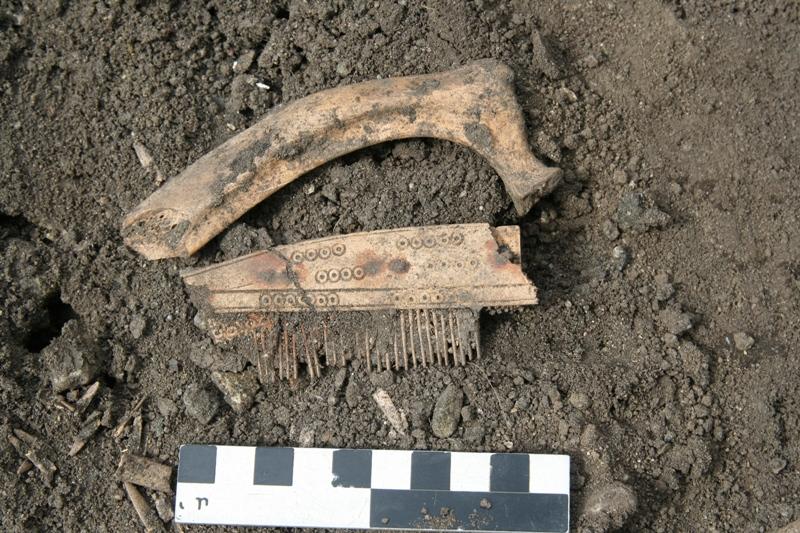Archaeological surveys unearth new knowledge about early Viking Age
Archaeological surveys at Bjørkum in Lærdal have unearthed more than 20 buildings, sheds, and tofts. This is probably also the largest find of bone material in one single locality from the Viking Age in Norway.
Main content
At Bjørkum, the conditions for the preservation of bones and other types of organic matter are extremely favourable. This has yielded a large and varied collection of objects and contributes to new knowledge about the Viking Age in Norway.
The excavations take place in connection with a new, projected road on the E 16 between Seltun and Stuvane. Archaeologists, botanists, and osteologists (who work with bone material) from Bergen Museum have from mid-June been trying to find traces of culture from the earliest part of the Viking Age at the farm Bjørkum. The excavation activities will continue up until the end of October.
The material gives evidence of farm activities, but also an extensive craft production, included herein are productions of tools from bone and antlers, iron working, and textile production. The collected material consists of everyday utensils, personal belongings like fragments of dress ornaments and beads, and also specialised tools used in the production.
A number of fragments and also almost complete quernstones have been found. In addition to this, the presence of bones linked to slaughter and consumption is quite large. In all probability, more than 100 000 bones and bone fragments will be collected. This may represent the largest osteological material found up until the present time in one single Viking Age locality in Norway.


